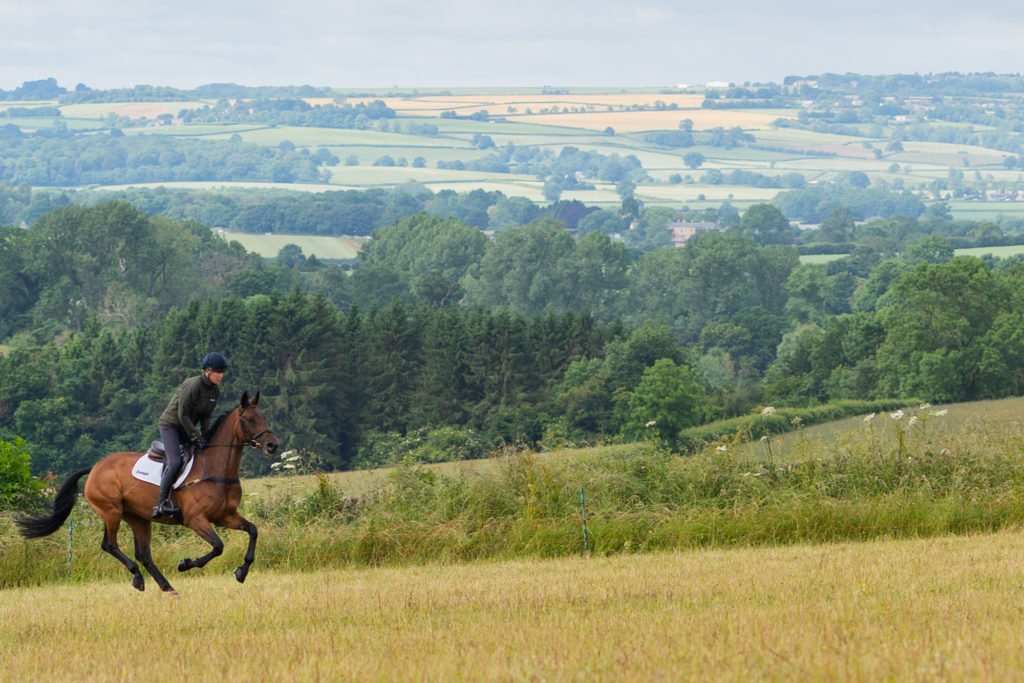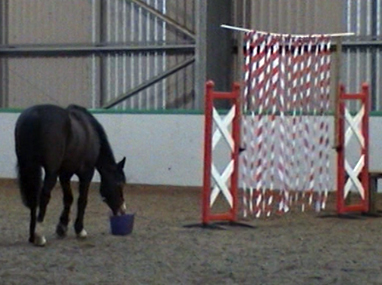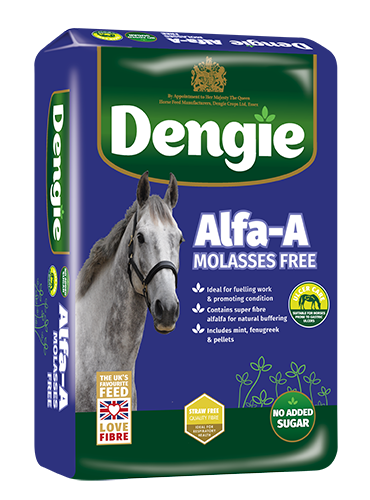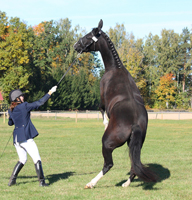Is there a link between feeding & behaviour
Whether it’s sugar or caffeine we reach for when we’re flagging a bit, we all know that what we consume can have an impact on our “energy” levels. But is the same really true of our horses – does what we feed make a difference to their behaviour?

Understanding more about energy
There are some key points about energy supply for the horse that we need to understand in order to appreciate how what we feed can impact behaviour:
- Carbohydrates include fibre, starch and sugar which vary considerably in how quickly they are broken down in the digestive system and therefore how quickly the energy they contain is released to the horse
- Carbohydrates are broken down in different ways in the different areas of the gut which also determines the type of energy they provide to the horse and how quickly the horse receives it
- Carbohydrates are the predominant energy source for herbivores such as the horse – the feedstuffs used for horses will vary in the proportions of the different carbohydrates they contain which largely determines their suitability for each horse and will determine the suitable energy feed for your horse.
| Carbohydrate Type | Speed of Release | Predominant or Ideal Site for Digestion | Broken Down by | Energy Produced |
|---|---|---|---|---|
| Fibre | Slow | Hind Gut | Microbial population e.g bacteria | Volatile Fatty Acids (VFAs) |
| Starch | Quick | Fore Gut | Enzymes in fore gut | Glucose if digested in fore gut, VFAs if reaches the hind gut |
| Sugar | Quicker! | Fore Gut | Enzymes in fore gut | Glucose if digested in fore gut, VFAs if reaches the hind gut |
So what does all this mean in relation to behaviour?
Feedstuffs that are higher in sugar and starch provide quick release energy. Studies measuring blood glucose levels after feeding oats found that levels peaked 2 hours after feeding whereas the levels of VFA in the hind gut peaked at around 5 hours after feeding a high fibre diet. What needs to be considered here is that if horses are fed an ad lib, high fibre diet, rather than a high fibre meal as was done for the purposes of the study, there is less likelihood of a “peak” as the horse is eating almost continuously.
The slow burn
So, in theory then, slower release energy sources should be less likely to cause over-excitable and spooky behaviour and this is certainly the anecdotal feedback of many horse owners. To try and substantiate this with some more scientific evidence, Dengie worked with researcher Louise Bulmer to explore the effects of different energy sources and energy feed for horses.
The trial compared the effects of feeding Alfa-A Molasses Free (containing 2% starch) with a cereal based mix (22% starch) with the same energy level (11.5MJ/Kg DE). The horses wore heart rate monitors and their behavioural reactions were also recorded when presented with new situations such as asking the horses to walk through a curtain of plastic strips.

The study showed that horses fed the cereal mix were more reactive to new experiences than those fed the fibre and oil diet and were less consistent in their behaviour. Interestingly they also had higher heart rates than those fed the fibre feed, the implication being that they were in a more reactive condition and so perhaps more likely to shy or spook at the novel stimuli. The study has since been replicated in naïve ponies i.e. those that had not been handled, to try to control for any possible human influence and the same results were found. This, along with other studies, is providing evidence that backs up the theory that fibre provides slow release energy.
What about protein?
Historically protein was thought to be the cause of many diseases as well as behavioural issues. This was arguably due to the fact that protein levels are a legal requirement to be declared on feed whereas energy, starch sugar etc aren’t. If horse owners went for a higher spec feed and their horse had issues, then they would see that the protein level had increased but would have no idea as to what the starch or energy levels in the different feeds were. A classic case of correlation but not necessarily causation!
Interestingly, tryptophan an amino acid or protein, is the precursor for serotonin and so is often included in “calmer” supplements. However, amino acids do contain carbon and if more protein than is required is supplied in the ration, the excess will be broken down and the carbon used as an energy source. This may mean that the horse is receiving more energy than it requires which could have an impact on behaviour but there is a positive side to this too. Studies in Standardbred horses in Scandinavia found no apparent impairment of performance when horses were fed a relatively high protein (16%) forage only diet. The implication being that if the additional protein wasn’t needed for muscle development or function then it was able to contribute to the horse’s energy requirements. This study supports the case for feeding better quality forages to reduce reliance on cereals in performance horses.
Where do I start?
If your horse is fizzy, spooky or over-excitable the first step is to try and reduce their starch intake and there are horse feed options available which provide energy without fizz. If your horse’s bodyweight and condition are good then it’s simply a case of energy matching their current ration using fibre and oil. The table shows how the same amount of energy can be provided by Alfa-A Original but with 10 times less starch. Please note that feed producers are not required to put starch levels on their bags of feed although many do.
| Feed | Energy/Kg | Amount Fed (Kgs) | Energy Supplied (MJ) | Starch (%) | Starch Supplied (grams) |
|---|---|---|---|---|---|
| Cool Mix | 10 | 2.5 | 25 | 20 | 500 |
| Alfa-A Original | 10 | 2.5 | 25 | 2 | 50 |
If your horse needs to gain weight then you need to increase the energy provided and so using more digestible fibre sources such as Alfa-Beet which contains unmolassed sugar beet and fibre based feeds that contain more oil such as Alfa-A Oil are good options. Many of these feeds will be straight feeds which means they haven’t got added vitamins and minerals. All you need to add is a broad spectrum vitamin and mineral supplement or balancer according to your horse’s requirements.
If you would like advice on your horse’s ration, call our Feedline on 01621 841188 or click here to complete our Feed Advice Form.
Glossary
Broad Spectrum vitamin and mineral supplement – contains a wide range of vitamins and minerals that when fed at the recommended quantities will provide a balanced diet
Enzymes – produced internally by the horse. Enzymes break down nutrients such as protein and starch
Fore Gut – the collective term for the stomach and small intestine – digestion tends to be enzymatic in this region of the digestive system
Hind Gut – the collective term for the caecum and large intestine – digestion is by the microbial population
Microbes – the population of “bugs” that reside in the gut consist of bacteria, fungi and protozoa
Serotonin – a neurotransmitter that regulates mood, appetite and sleep
Volatile Fatty Acids – the end products of fibre fermentation. A source of slow release energy for the horse
References
Fibre for performance horses: a review, (2016) Richardson and Murray, Journal of Equine Veterinary Science
Preference of horses for grass conserved as hay, haylage or silage C.E. Muller ∗, P. Uden Department of Animal Nutrition and Management, Swedish University of Agricultural Sciences



